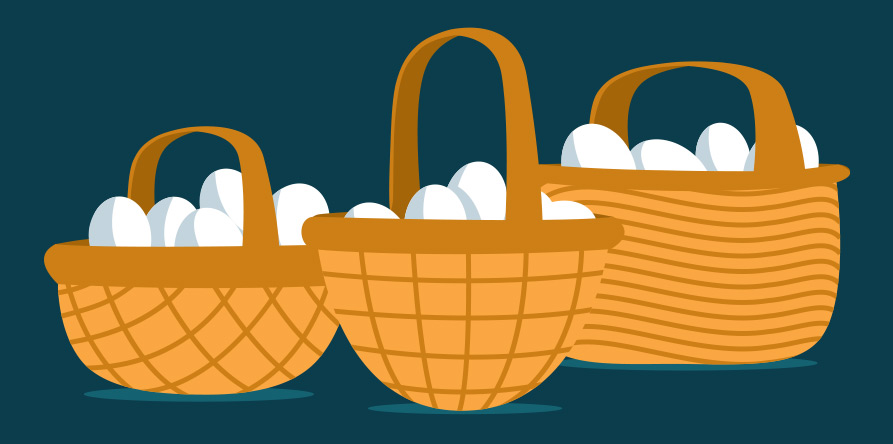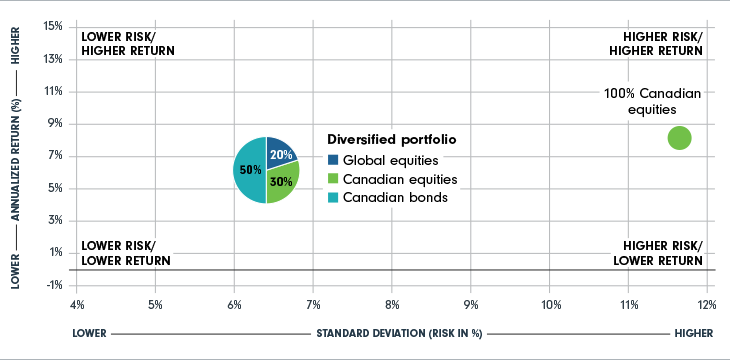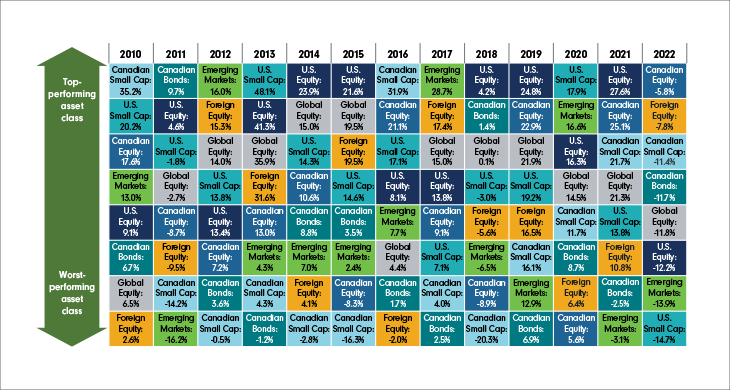Diversify your portfolio: Don’t put all your eggs in one basket

It’s easy to get caught up in playing it safe. If you’re new to investing, you might only be looking into bonds and the Canadian market. The problem is your portfolio may miss out on positive returns if you don’t diversify with stocks (equities) and markets outside of Canada. Let’s start by considering the difference between stocks and bonds.
How risky are stocks compared with bonds?
Which are riskier, stocks or bonds? The right answer is both: either one can be risky if it’s the only type of investment you have. That’s why it’s important to diversify – to put your money into different types of investments. Remember to keep the time horizon of your investments in mind when looking at the ratio of stocks to bonds. Your short-term investments may not be treated the same as your long-term investments.
Stock market investments – also known as equities – tend to produce a higher average annual return. But they also have a greater “standard deviation” or risk; their value can swing widely.
Bonds tend to have lower returns, but they are also less volatile.
As the chart below shows, by combining the right mix of stocks and bonds in your portfolio, you can lower your risk while still adding enough growth to help reach your investment goals.

Learn more from our asset allocation experts
Go global for more investment options
When it comes to investing, most of us seldom leave home. But since Canada makes up approximately 3% of the world’s markets, investing solely in the Canadian stock market limits both investment opportunities and diversification. Imagine always vacationing at the same local resort and missing out on the opportunity to visit new countries. If you only invest in Canada, you can also miss on investment opportunities that other markets have to offer.
Investing abroad can introduce additional risks: shifts in currencies, political and economic upheavals or poorly regulated markets. But it can also bring benefits: rapidly growing economies and well-established companies.
And as the chart shows, Canadian and other international stock markets tend to move in different directions in relation to each other – so investing in different parts of the world can bring both balance and greater growth to your portfolio.





